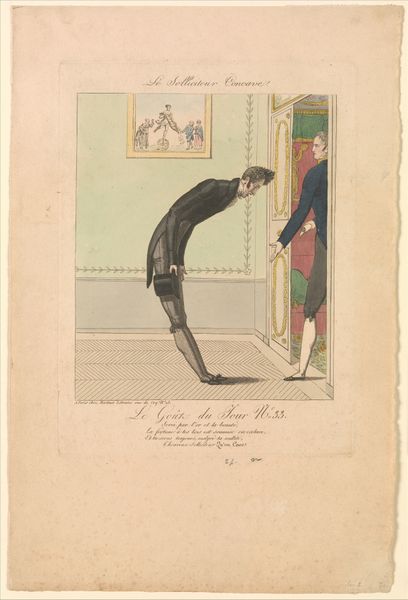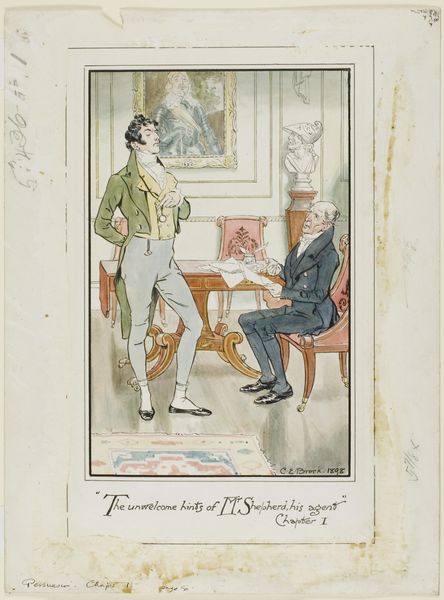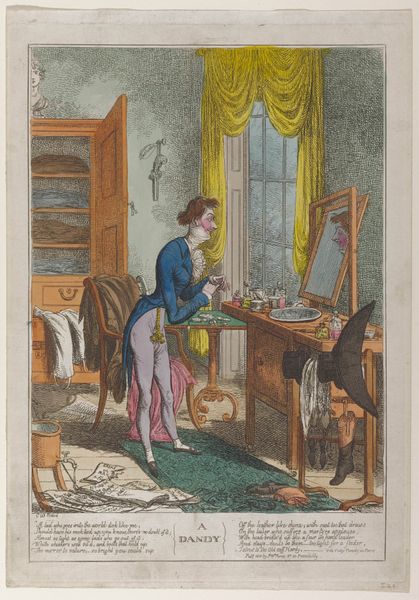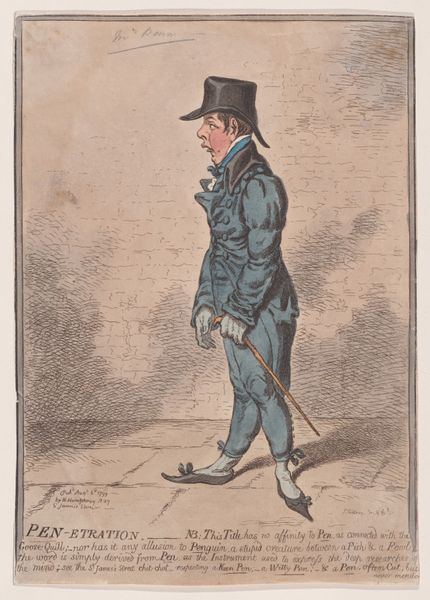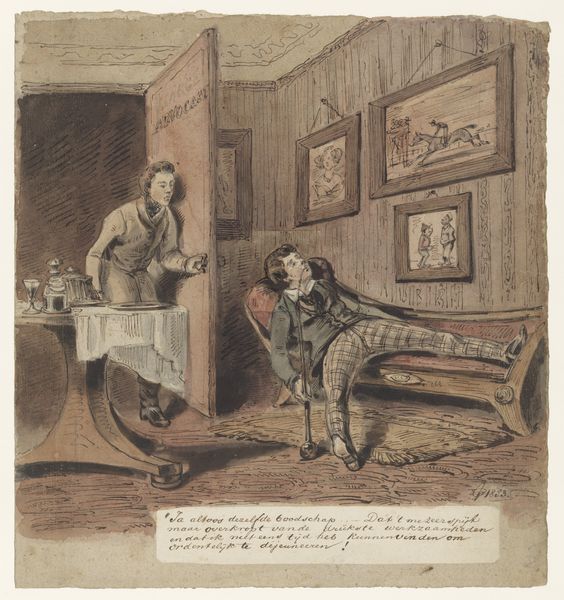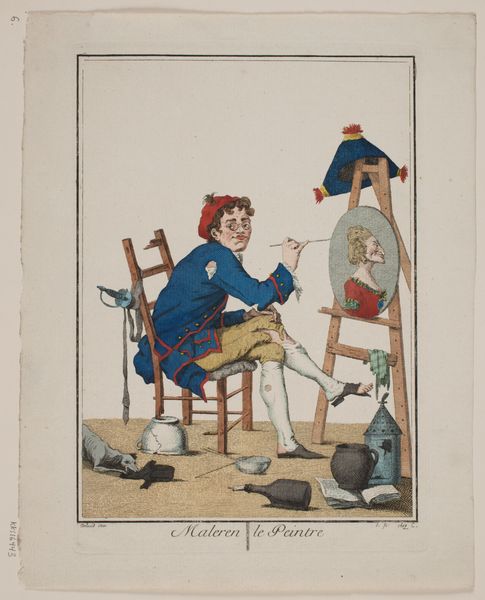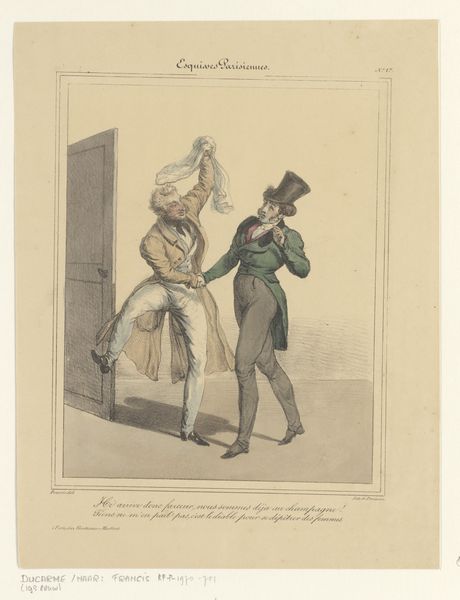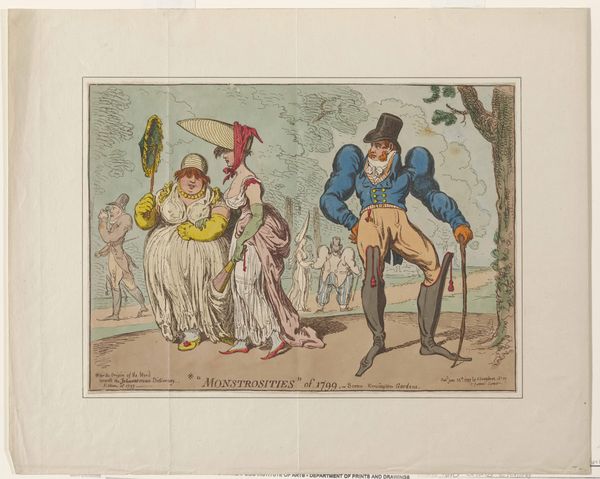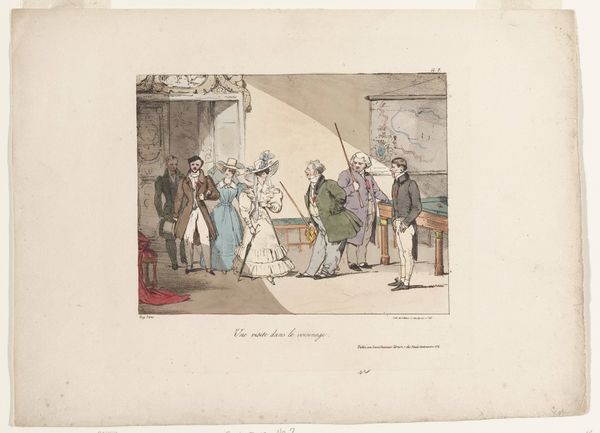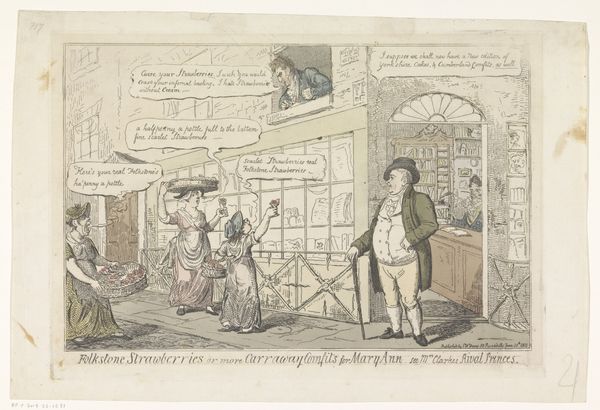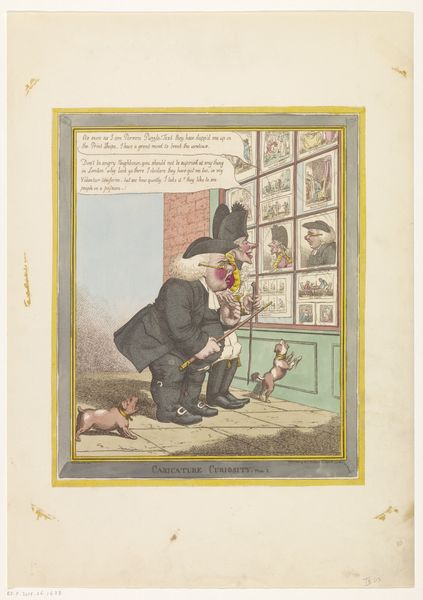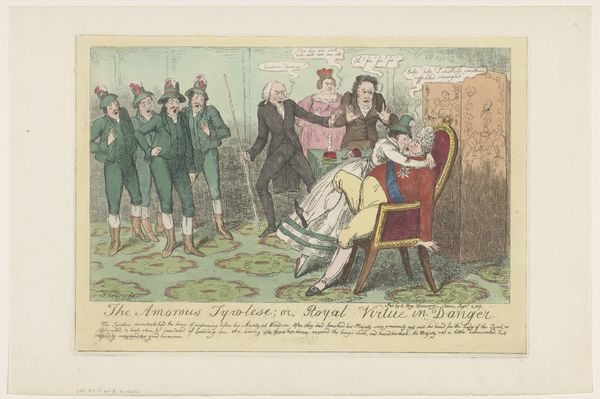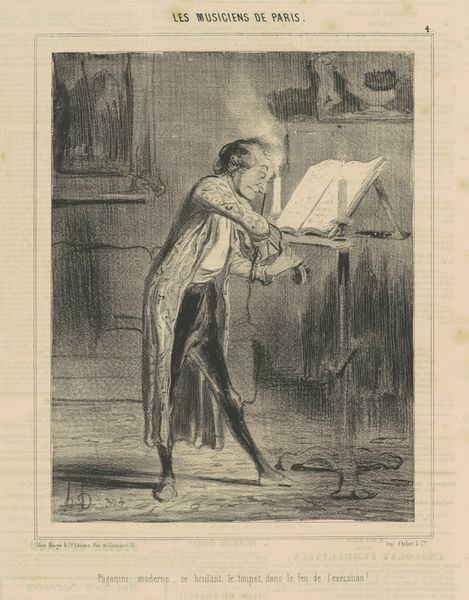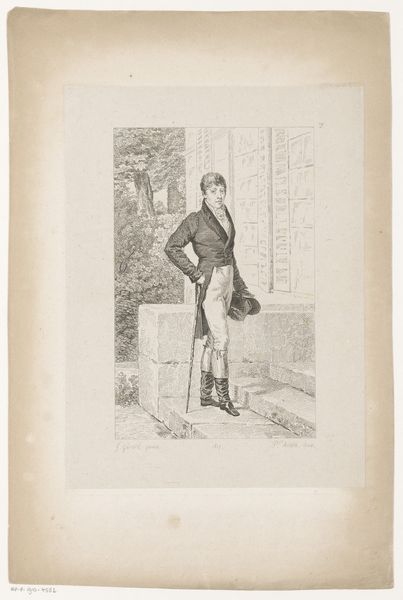
print, engraving
#
portrait
#
blue ink drawing
# print
#
caricature
#
cartoon sketch
#
figuration
#
romanticism
#
line
#
genre-painting
#
history-painting
#
engraving
Dimensions: height 249 mm, width 188 mm
Copyright: Rijks Museum: Open Domain
Isaac Cruikshank created this satirical print of Caleb Whitefoord, likely in the late 18th century. During this time, satire was a powerful tool to critique social and political figures. In this etching, Whitefoord, a wine merchant, is mocked for his supposed interest in paintings of nude women. The prints on the wall are a spectacle for the male gaze and reveal societal norms related to gender and class. The humor relies on stereotypes about aging men and their supposed lechery. Yet, there is a melancholic undertone. Whitefoord seems alone, perhaps lost in thought as he gazes at a catalogue of paintings. Cruikshank uses caricature to expose what he sees as hypocrisy or folly. The print is more than just a joke, it is a reflection of the era's attitudes toward aging, sexuality, and the commodification of women in art. It leaves us to wonder about the relationship between public persona and private desires, and the price of living under constant scrutiny.
Comments
rijksmuseum about 2 years ago
⋮
The Scotsman Caleb Whitefoord was a well-known public figure in Cruikshank’s time and featured often in satirical prints. Besides being a wine merchant, diplomat and writer, he was an expert in Old Masters. He was also a notorious collector of erotic art. Thus he has here found his way to a corner full of classic nude beauties, including the Three Graces at lower right.
Join the conversation
Join millions of artists and users on Artera today and experience the ultimate creative platform.
